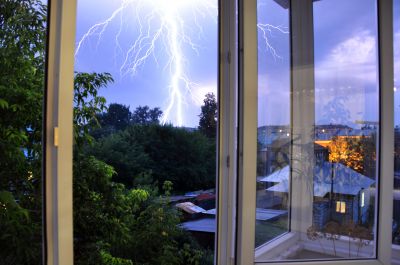Leading Storm Restoration Supplies To Restore and Protect Your Property
Choose from high-quality supplies that ensure thorough restoration and help safeguard your home against future storms.
 In Sun City West, AZ, storm restoration products are essential for restoring and protecting properties after severe weather events. The array of available products caters to various needs, including roof repairs, water mitigation, and structural reinforcement. When selecting storm restoration supplies, it is important to consider durability, ease of installation, and suitability for the specific types of damage common in the region. From roofing components to waterproofing materials, the right products can help mitigate further damage and support efficient recovery efforts.
In Sun City West, AZ, storm restoration products are essential for restoring and protecting properties after severe weather events. The array of available products caters to various needs, including roof repairs, water mitigation, and structural reinforcement. When selecting storm restoration supplies, it is important to consider durability, ease of installation, and suitability for the specific types of damage common in the region. From roofing components to waterproofing materials, the right products can help mitigate further damage and support efficient recovery efforts.
Top Overall Option
Heavy-Duty Roofing System
A versatile and durable roofing system that combines reinforced shingles or metal panels with high-quality underlayment. Designed to withstand high winds and heavy rain, this roofing solution offers reliable protection and long-term performance. Its adaptability makes it suitable for various building types and storm conditions, providing a solid foundation for storm restoration efforts.
Types of Products For Storm Restorations
Reinforced Shingles
Strengthened roofing shingles designed to resist impact and wind damage, suitable for storm-prone areas.
Metal Roofing Panels
Durable metal panels offering high wind resistance and longevity for roofs exposed to storms.
Roof Underlayment
Water-resistant underlayment materials that provide an extra layer of protection beneath roofing materials.
Waterproof Sealants
Sealants used to prevent water infiltration around roof penetrations and joints.
Sump Pumps
Devices designed to remove accumulated water from basements and crawl spaces after flooding.
Hurricane Straps
Structural reinforcements that secure roofs to walls, enhancing wind resistance.
Impact-Resistant Windows
Windows designed to withstand flying debris and high winds during storms.
Storm Doors
Reinforced doors that provide additional protection against wind and debris impact.
Debris Netting
Protective netting used during construction or repair to contain falling debris.
Flood Barriers
Portable barriers used to divert floodwaters away from properties.
Waterproof Paints and Coatings
Protective coatings that help prevent water penetration on walls and foundations.
Structural Reinforcement Kits
Complete sets of hardware and materials for reinforcing vulnerable structures.
Drainage Systems
Efficient drainage solutions to prevent water accumulation around foundations.
Temporary Roofing Tarps
Heavy-duty tarps used to cover damaged roofs temporarily during repairs.
Wind-Resistant Doors and Windows
Specialized doors and windows designed to resist high wind pressures.
Impact-Resistant Siding
Exterior siding materials that withstand impact from debris and high winds.
Popular Choices
Widely used for their ability to withstand debris impact and wind pressure.
Commonly selected for their impact resistance and durability in storm regions.
Popular for property protection against flooding during heavy rains.
Frequently used to reinforce roof-to-wall connections against high winds.
Essential for sealing leaks and preventing water intrusion after storms.
Commonly installed to mitigate basement flooding after heavy rainfall.
Chosen for their ability to withstand wind and debris impact.
Popular for providing additional exterior protection during storms.
Frequently used as an additional water barrier beneath roofing materials.
Often selected to enhance the stability of vulnerable structures.
Applied to walls and foundations to prevent water penetration.
Popular for managing stormwater runoff and protecting foundations.
Used frequently to cover damaged roofs during ongoing repairs.
Chosen for its durability against debris impact in storm-prone areas.
Commonly employed during repair projects to contain falling debris.
Popular choices for exterior openings to resist high wind pressures.
Storm restoration often involves addressing water intrusion, wind damage, and debris impact. High-quality roofing materials such as reinforced shingles, metal panels, and underlayment are vital for safeguarding buildings against future storms. Additionally, water barriers, sealants, and sump pumps play a crucial role in managing water infiltration, especially during heavy rains. Structural reinforcements like hurricane straps and impact-resistant windows provide added resilience against high winds and flying debris.
Proper selection and application of these products can significantly influence the speed and effectiveness of restoration efforts. It is advisable to choose products that meet local building codes and offer reliable performance in storm-prone areas. Consulting with professionals and using reputable suppliers ensures that the materials used are appropriate for the specific challenges faced in Sun City West, AZ. Overall, a comprehensive approach incorporating diverse products tailored to storm damage can help property owners restore safety and stability efficiently.
Key Buying Considerations
- Assess the specific types of storm damage common in your area to choose appropriate products.
- Verify that products meet local building codes and standards for storm resistance.
- Consider the durability and impact resistance of roofing materials for long-term protection.
- Evaluate the ease of installation, especially for DIY projects or quick repairs.
- Check compatibility of products with existing structures and materials.
- Determine the level of water resistance needed based on flood risk and rainfall patterns.
- Look for products with proven performance in high wind environments.
- Consider the availability of warranties or guarantees for the products purchased.
- Prioritize products that require minimal maintenance after installation.
- Research supplier reputation and customer reviews for reliability and support.
- Factor in the cost-effectiveness of products relative to their durability and protection level.
- Assess whether products can be used for temporary or long-term restoration needs.
- Ensure that safety features are incorporated, especially for structural reinforcements.
- Review the compatibility of sealants and waterproofing materials with roofing and siding.
- Consider the environmental conditions, such as temperature fluctuations, that may affect product performance.
